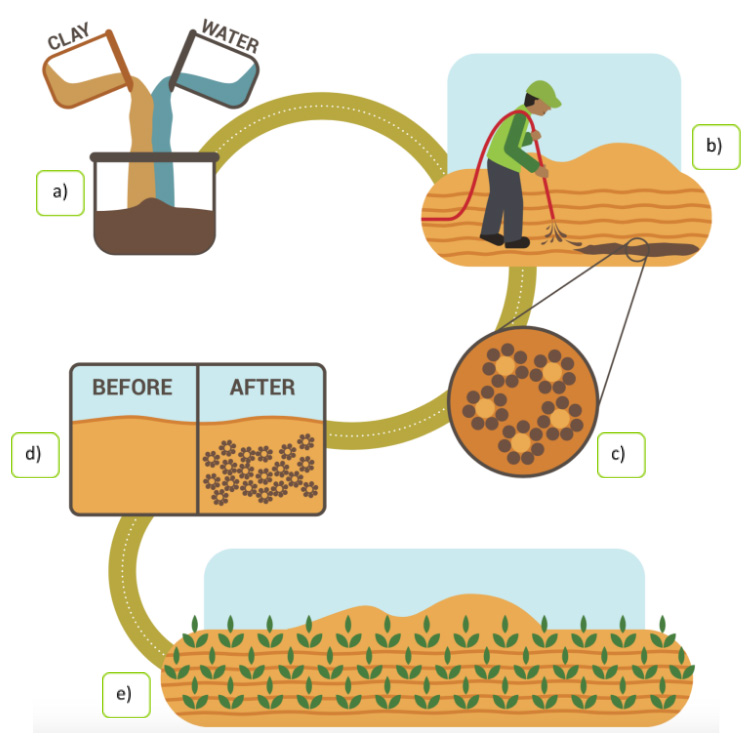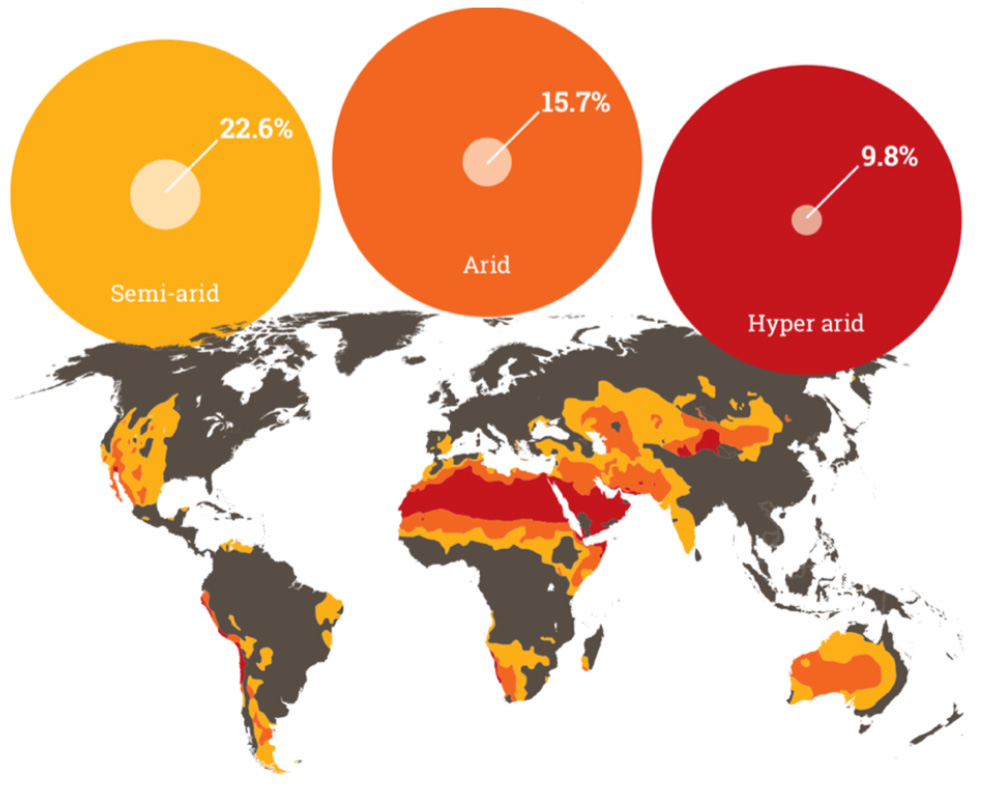PERMANENT CROPS, ORCHARDS, AND VINEYARDS
NAVIGATING SANDY SOIL HURDLES IN HIGH-VALUE FARMING?


How can you ensure that every root gets the hydration it needs?
Your trees and vines plunge deep, searching for moisture. Sandy soils can leave their efforts unrewarded.
- Challenges of Deep Hydration in Sandy Soils
- Optimizing Root Hydration in Sandy Soil Environments
- Solutions to Ensure Hydration for Every Root in Sandy Soils


Need a solution that preserves while it enhances?
Traditional soil amelioration methods can be invasive, risking harm to mature and well-established plants.
- Challenges of Deep Hydration in Sandy Soils
- Optimizing Root Hydration in Sandy Soil Environments
- Solutions to Ensure Hydration for Every Root in Sandy Soils


Are your soils contributing to this variability?
The last thing a specialty grower wants is inconsistency – a batch of grapes that isn’t as sweet, or fruits that lack juiciness.
- Challenges of Deep Hydration in Sandy Soils
- Optimizing Root Hydration in Sandy Soil Environments
- Solutions to Ensure Hydration for Every Root in Sandy Soils


Struggling with inconsistent yields due to erratic soil conditions?
LNC promotes deep-rooted consistency, leading to more predictable and higher quality harvests while optimizing input efficiency.
- Challenges of Deep Hydration in Sandy Soils
- Optimizing Root Hydration in Sandy Soil Environments
- Solutions to Ensure Hydration for Every Root in Sandy Soils


Worried about your trees' and vines' roots being exposed to stress from fluctuating water levels?
LNC promotes uniform water distribution, protecting delicate roots and enhancing plant health.
- Challenges of Deep Hydration in Sandy Soils
- Optimizing Root Hydration in Sandy Soil Environments
- Solutions to Ensure Hydration for Every Root in Sandy Soils


Do high-quality crops lose out on vital nutrients due to sandy soil leaching?
LNC helps retain essential nutrients, ensuring your plants get the nourishment they deserve.
- Challenges of Deep Hydration in Sandy Soils
- Optimizing Root Hydration in Sandy Soil Environments
- Solutions to Ensure Hydration for Every Root in Sandy Soils
EXPERIENCE THE LNC
DIFFERENCE
WATER SAVINGS
Reduce irrigation needs and water costs.
INCREASED YIELD
Achieve richer harvests and more bountiful crops.
IMPROVED SOIL HEALTH
Foster a thriving soil
ecosystem.
COST-EFFICIENCY
Optimize input costs
for higher profits.
RESILIENT GROWTH
Ensure sustainable and consistent harvests
year after year.
HOW LNC WORKS?
APPLY
Applied directly to desertified, barren, or arid land.
SAVE
LNC percolates onto the ground, forming a structure that retains water and nutrients like a sponge.
GROW
Fosters improved soil health, increasing plant quality and crop yields.
ELEVATE THE POTENTIAL OF ESTABLISHED
ORCHARDS AND VINEYARDS WITH LNC
For established orchards and vineyards, the soil is the lifeline, ensuring quality produce every season
LNC seamlessly integrates, traveling deep and upgrading the soil around the entire root system. The result? A more vibrant soil ecosystem for the growth of permanent crops with optimal utilization of inputs. Whether it’s the richness of your fruits, the robustness of your nuts, the sweetness of your citrus, or the bouquet of your wine, LNC promotes excellence from root to table.


Is the thought of disturbing your grown trees holding you back from soil improvement measures?
LNC can be applied directly to the soil surface. It percolates effortlessly, reaching the entire soil structure around the roots, all without disturbing your established trees, their root systems, or the surrounding vegetation. This deep action ensures a conducive environment for the growth of permanent crops, enhancing the very foundation they rely on.
The mere thought of disturbing mature trees and plants can be daunting. With LNC, there’s no need. Apply directly to the soil surface and let it work its magic, enhancing the soil around the root system without any disturbance to your established flora.


With LNC, you're not just treating the surface
Its unique liquid formulation ensures that the entire soil structure surrounding the roots is upgraded, enhancing water retention where trees and plants need it most.
LNC isn’t superficial. Its unique liquid formulation ensures enrichment not just at the surface but deep down, enhancing rooted water retention right where trees and plants tap into their sustenance.


Achieve uniform and high-quality harvests with LNC
Reducing the variability often seen in specialty crops due to inconsistent soil quality. LNC paves the way for deep-rooted consistency, prompting more uniform and higher-quality harvests year after year.
TAKE A LOOK AT WHAT SAY OUR CLIENTS
IF YOU CAN SAVE 20% ON WATER
If you can save 20% on water, it may not be a big deal in every area, but it’s going to be a big deal in every area at some point.

Justin Beck
SUCCESS STORIES FROM THE FIELD
“Our decision to expand LNC deployment in Yuma is a testament to the effectiveness and scalability of Liquid Natural Clay in enhancing soil health. This technology optimizes the use of natural resources, paving the way for more sustainable and profitable desert farming practices, in close alignment with our sustainability programs.”

Edgar Gutierrez
SUCCESS STORIES IN GOLF COURSE MANAGEMENT
“Like most golf courses ours is build to drain like nothing else, which may be fine for places were it rains all the time, but not out here in the desert where water is our most precious resource. After applying Desert Control’s LNC we have significantly reduced irrigation water requirements to maintain a perfect playing surface.”

Brian Claar
Professional / General Manager
SUCCESS STORIES IN URBAN GREEN SPACES
Liquid Natural Clay has been instrumental in water conservation and maintaining our lush Green Landscapes for Masdar City. The Pump Track Park led the way as an early adopter of LNC, addressing water savings in a traditional urban context and supporting the Federal agenda on water scarcity and security. Through a study of over 7 months, we observed water savings of up to 60% for trees during specific months of the year.

Sebastien Miller
United Arab Emirates
FAQ
What is LNC?
- LNC is Liquid Natural Clay.
- LNC is created in a mixing process of clay and water patented by Desert Control.
- LNC is mixed, on site, where it will be used, using only water and clay.
- LNC is a purely natural product with no chemical additives.
How does LNC work?
The following illustration shows how LNC works, with an explanation of each step underneath.

What does LNC do?
- LNC enriches sandy soil, giving it the absorbing character of normal black soil with traits comparable to high quality farming soil, with lower irrigation requirements and higher crop yields.
- LNC adds a 1,5 nanometer thick layer of clay to the surface of sand particles. This allows moisture to absorb to the sand particles, so instead of having water and nutrients percolating through the soil, they stay in an LNC enriched layer in the soil.
- LNC treated areas has a good ratio of clay that makes the soil hold on to water without suffocating it with too much clay.
LNC treated sand is airy and creates a good environment for fungus to thrive and for plants to grow.
How is LNC applied to an area?
- The LNC mixture is applied to a given area through traditional irrigation (or injecting) methods used in farming.
- Depending on what will be grown in the treated area, the soil is saturated down to root level (normally 30-60 cm down).
- The actual depth of the LNC layer is regulated through the duration of the LNC irrigation.
Where can LNC be used?
LNC can be used in any geographic region with sandy soil. The image below shows the spread of different kinds of deserts, where LNC can be useful.

LNC has been tested and proven effective in sandy soil with a high percolation rate.
A proper soil analysis needs to be conducted before any LNC treatment, to tailor the solution to the soil need.
Is there anything you can’t grow on soil treated with LNC?
You can grow anything that would normally be grown in the geographic region. The LNC treatments optimizes the soil.
Do you use local products in the manufacturing of LNC?
Yes, we use locally sourced water. Clay can be imported or – if available – used from local sources.
How long does the application process take?
Each project must be planned based on the availability of water, clay source, irrigation method used and topography of area to be treated. When the LNC is implemented, it will work in a few hours after the LNC has settled in the sand.
How long does each LNC tratment last? How often does it neet to be retreated?
- The main issue is to have plants/vegetation covering the surface in order to avoid wind erosion, which with time will break down the layers in the soil, including the LNC layer.
- Assuming something is growing on the soil, how long a LNC treatment lasts, depends on how actively the soil is tilled. In soils that are actively tilled, an LNC treatment will typically last 3-5 years, before the LNC layer needs to be “topped up” by applying LNC again.
- If the soil isn’t tilled, like in tree plantations, parks or gardens, we expect it to last 15 to 20 years or more. The question here is the availability of nutrients for the plants/trees/grass; if these are lacking the plants/trees/grass will start to take these from the clay, so it is advisable to do regular soil analysis to know the health of the soil.
Is LNC patented?
LNC is patented in around 50 countries with desertification problems.
Where is it possible to see the effects of LNC
You can see the field test in Al Ain as featured in the BBC series “Taking the Temperature”: link
Are there chemicals in LNC?
No. LNC does not contain any chemicals and is only made from natural components.
Is LNC organic?
LNC is mineral based (because it is composed of water and clay), so while not organic, it is made of only natural components, and is both ecologically sound and poses no threat to any ecosystem.
How can LNC contribute to the United Nations Sustainable Development Goals (SDG)?
he Sustainable Development Goals (SDGs), otherwise known as the Global Goals, were created in 2012 at the United Nations Conference on Sustainable Development in Rio de Janeiro. The objective was to produce a set of universal goals that meet the urgent environmental, political and economic challenges facing our world. They are a universal call to action to end poverty, protect the planet and ensure that all people enjoy peace and prosperity.
Our business touches on many of the 17 UN Sustainable development goals, directly or indirectly. The advantages of treating desert soil with LNC treatment are directly linked to goals 2, 9, 13 and 15. This is where we believe we can have the most positive impact, both for society and for our business, both now and for the future. (There’s a black box around the SDGs LNC actively impacts):

Goal 2: Zero Hunger
Direct Positive Effect!
End hunger, achieve food security and improved nutrition and promote sustainable agriculture (link)
LNC will allow for areas previously thought unsustainable for farming to be used for growing food crops.
LNC cuts the usage of water by a minimum of 50%, so larger areas can be farmed using the same amount of water.
Goal 6: Clean Water and Sanitation
LNC creates a layer in the soil, that effectively saves water and nutrients, so fertilizers will stay where they are meant to stay and won’t disappear through the soil and pollute ground water underneath.
Goal 8:Decent Work and Economic Growth
By reclaiming deserts and farming areas previously thought impossible to farm, new jobs will be created, giving more people a chance to work.
Goal 9: Industry, Innovation and Infrastructure
Direct Positive Effect!
Build resilient infrastructure, promote inclusive and sustainable industrialization and foster innovation (link)
LNC represents an innovation that will expand industry into new areas. New areas will require new infrastructure.
Goal 11: Sustainable Cities and Communities
Water is a scarce resource and agriculture uses a lot of water. By applying LNC we can cut the water usage by a minimum of 50% freeing up water for other uses.
Treating areas with LNC will provide local people with jobs, both in the treatment phase, but also when land needs to be farmed or cultivated afterwards.
Goal 12: Responsible Consumption and Production
Cultivating deserts and turning them into farmland will help countries feed their citizens while they at the same time provide jobs.
Using LNC to cultivate land will allow for greener farming, because LNC treated soil retains fertilizers where they are intended, so they won’t pollute groundwater or nearby rivers and bodies of water.
LNC cuts the need for irrigation by 50-70% freeing up scarce water resources for use as drinking water.
Goal 13: Climate Action
Direct Positive Effect!
Take urgent action to combat climate change and its impacts. (link)
Stopping desertification and making the planet green again has many positive effects for the climate and Earth as a whole.
LNC allows plants to grow in areas that previously had too little water to sustain life. LNC treated soil will allow plants to thrive, using 50-70% less water than they normally would. This means that deserts can be reclaimed with smart use of water resources.
Reclaiming deserts by growing green plants reduces CO2 emissions by 15-25 tons/hectare.
LNC will help make water less of a scarce resource in the areas that need it the most.
LNC reduces the need for irrigation between 50-70%.
The agricultural sector is one of the biggest consumers of water, so reducing their usage of water will free up water for elsewhere.
A layer of LNC will stop fertilizers running through the soil and polluting under-laying soil and water table.
Desert sand heats up easier and retains heat longer than plants do, as a result you can lower the surface temperature by up to 15°C by replacing sand with plants. LNC allows plants to grow in areas where it was previously impossible using 50-70% less water, which is optimal for the reclamation of sandy deserts.
Goal 14: Life Below Water
LNC stops the percolation of fertilizers that runoff into streams and rivers that lead into the ocean polluting not only groundwater, but the oceans surrounding us.
Goal 15: Life on Land
Direct Positive Effect!
Protect, restore and promote sustainable use of terrestrial ecosystems, sustainably manage forests, combat desertification, and halt and reverse land degradation and halt biodiversity loss (link) (please note 15.3)
Stopping desertification and making the planet green again has many positive effects for life on land and Earth as a whole.
LNC allows plants to grow in areas that previously had too little water to sustain life. LNC treated soil will allow plants to thrive, using 50-70% less water than they normally would. This means that deserts can be reclaimed with smart use of water resources.
Reclaiming deserts by growing green plants reduces CO2 emissions by 15-25 tons/hectare.
LNC will help make water less of a scarce resource in the areas that need it the most.
LNC reduces the need for irrigation between 50-70%.
The agricultural sector is one of the biggest consumers of water, so reducing their usage of water will free up water for elsewhere.
A layer of LNC will stop fertilizers running through the soil and polluting under-laying soil and water table.
Desert sand heats up easier and retains heat longer than plants do, as a result you can lower the surface temperature by up to 15°C by replacing sand with plants. LNC allows plants to grow in areas where it was previously impossible using 50-70% less water, which is optimal for the reclamation of sandy deserts.
Goal 17: Partnerships for the Goals
To ensure that as many people as possible can benefit from the use of LNC we are dependent on establishing a number of partnerships with all levels of society.
Who is Desert Control?
Desert Control is a Norwegian company with global outreach that was founded in 2017.
Desert Control is registered in Norway with the Organization number: 919 415 630
You can read more about the senior management here: link
Who invented LNC?
Kristian Olesen invented LNC and spent 8 years in R&D, before Desert Control AS was established in 2017.
subscribe to our newsletter!
SOLUTION AREAS
Get in touch
-
Write to us
post@desertcontrol.com -
Contact us
Desert Control AS
Grenseveien 21 4313
Sandnes, Norway